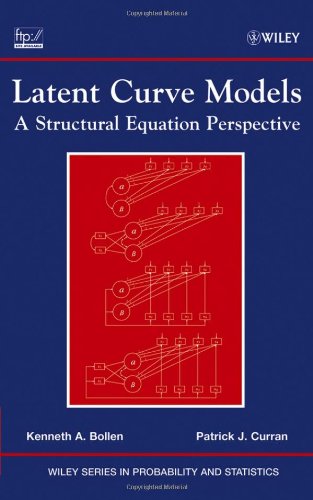(Ebook) Latent curve models: a structural equation perspective by Kenneth A. Bollen, Patrick J. Curran ISBN 9780471455929, 047145592X
PrefaceThe last 20 years has witnessed a greater accumulation of longitudinal data in thesocial sciences than any other period. Accompanying this growth of data has beenan interest in methods to analyze such data. Growth curve models or latent curvemodels have been among some of the most recently popular longitudinal techniques.Although new to some researchers, the historic roots of these techniques are deep.Indeed, these models have their origins in biostatistics, statistics, demography, andother disciplines. Their different disciplinary origins have given the same techniquedifferent orientations.Our book is about growth curve models as they have developed in the latentvariable and factor analysis tradition. Borrowing from Meredith and Tisak (1984,1990), we refer to these as latent curve models (LCMs). They are models in whichwe have random intercepts and random slopes that permit each case in the sampleto have a different trajectory over time. The random coefficients are incorporatedinto structural equation models (SEMs) by considering them as latent variables. Byso doing, we are able to capitalize on all of the strengths of SEMs and to applythem to latent curve models. These include the ability to use maximum likelihoodtechniques for missing data, to estimate a variety of nonlinear forms of trajectories,to have measures of model fit and diagnostics to determine the source of ill-fit, theinclusion of latent covariates and latent repeated variables, and so on.One of our goals is to provide a reference source on the LCM approach tolongitudinal data. This is a field that is undergoing rapid development, but we doour best to provide many of the most recent developments. The book synthesizes alarge amount of work on LCMs as well as providing original results. For instance,we develop new results on the identification of several types of LCMs. We includesome of our recently proposed work on the autoregressive latent trajectory (ALT)model and suggest new models for method factors in multiple indicator, repeatedlatent variable models. Researchers with a background in structural equation modelsand an interest in longitudinal data are ideally suited for this book.We have said what the book is about. It also is worthwhile to state what it is not.It is not a comprehensive guide to all approaches to growth curve models. There isa valuable literature in biostatistics on growth curve models and another traditionfrom multilevel models. There is a great deal of overlap in these approaches andLCMs, and in parts of the book we point out the connections and sometimes theequivalency of models and results. However, a reader looking for comprehensivetreatments of growth curve models from these other traditions will not find it here.Those seeking an extensive treatment of these models from a structural equationperspective are our intended audience.
*Free conversion of into popular formats such as PDF, DOCX, DOC, AZW, EPUB, and MOBI after payment.


